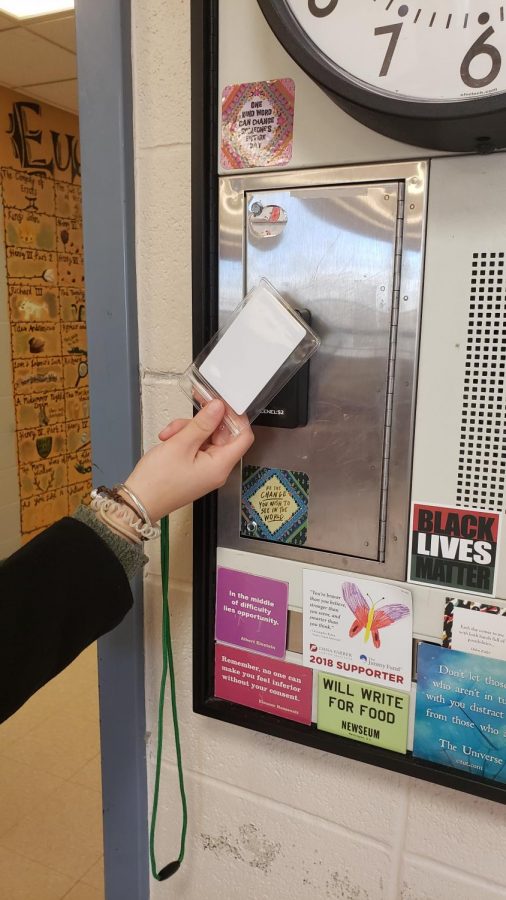All About The IDs
BHS implements new ID system in order to properly contact trace students and staff.
Photo by Nick Kallipolites
Students now use IDs to scan in and out of classrooms.
November 30, 2020
Beep. Beep. Beep. Upon entering a classroom at Barnstable High School in 2020, students are required to scan in at the door using their newly acquired identification cards. The scanners themselves, installed in every room (including the bathrooms, performing arts center, and hub offices) by the technology department, are used to trace the path of any potential COVID-19 case and confirm who would need to self-quarantine based on close contact with the person.
“They work as well as you use them. That is why we emphasize scanning in and out so much. Every time you scan into a classroom, that information is sent to a software that can identify where you last scanned in and also to a COVID software that tracks close contact between students and staff,” Ashley Bishop, the administrative assistant in Operations, said.
Close contact is considered being within six feet of a student for 15 minutes or more. The administration hopes that for situations like passing time in the hallway, there will not be any sustained contact and will be only moving from one place to another instead of stopping to chat. Passing time in the new schedule has been extended to 10 minutes from originally six, which is still under the 15 minutes suggested by the close contact guidelines.
The radio frequency identification (RFID) cards given to students to use with the system are white with a sticker attached outlining their credentials. The technology that identifies students is not contained within the sticker, but the card itself. It is imperative not to snap or break them for this reason.
“The cards themselves have ID numbers that are associated with the student. They can only have one functional card at a time. For example, if a student has multiple ID cards, the first ones will have been deactivated so the only most recent one will work. That’s most likely why cards won’t work anymore if you try to scan in with them.” said Bishop.
If a student forgets their RFID card at home on a day they are physically attending school, they are sent to the performing arts center to Zoom into their classes for the day. Those students will still be marked present for attendance, just virtually so instead of in the classroom.
Teachers around the building are optimistic about the system and its potential future uses. Ken Holland, an AP Physics teacher, noticed some similarities between the high school and working in the real world.
“Most workplaces have some sort of identification that you have to carry around, especially more secure places like a bank or office building. When I used to work in a supermarket years ago, I physically had to punch in to let my boss know I was there. I figured for attendance it was only a matter of time before something like this was instituted. It’s been great for me because I don’t have to write passes anymore,” said Holland.
Victoria Miklosky, a Latin teacher, said the system is good, but not perfect for attendance if students don’t use it perfectly.
“It’s my understanding that they were a necessity to enable contact tracing… I think they are an important part of the school’s response to COVID-19. Based on my experience in the classroom, I think it would be nice if the readers could do my attendance for me, but that assumes facts not in evidence, ie. completely reliable humans beeping in and out.”


